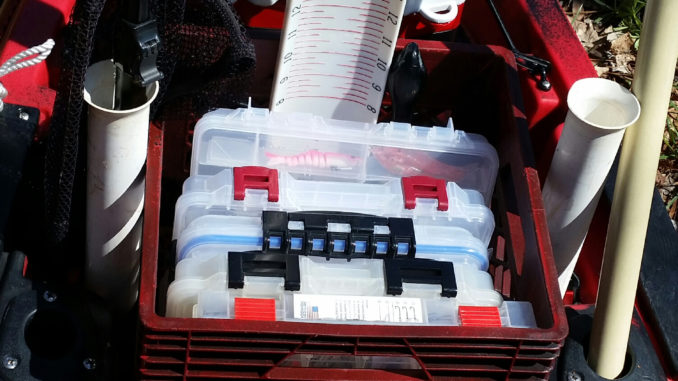
Milk crates can perform many tasks in kayaks
Kayak anglers have a unique addiction. There is one object primarily used for something else that will cause a paddler to do a double take when it comes to using it or not: a milk crate.
Not all of those that hit the waters in search of fish with a paddle crave the milk crate, but you can ask any of them about a milk crate, and they can instantly rattle off detail after detail on how to use it effectively.
The milk crate has made its way into the kayak fishing world for many reasons: size, availability and customization. Likely the only rivals to the milk crate for effectiveness and creativity are the pool noodle and PVC pipe.
One key feature of the milk crate is the ease of taking the things you need with you. Many anglers keep several crates stocked with different tackle and accessories based on saltwater, freshwater, open water, rivers and streams. By having everything you need in a convenient crate, it is more difficult to forget something before heading out — you know, like when you get to the water and realize you left hooks at home? The handles on all four sides make it a breeze to grab hold of and carry.
Because most milk crates come in a standard size and have become the go-to choice of storage for many anglers, most kayak manufacturers have designed their kayaks with a platform behind the seat to hold a crate. They are not overly large, and their webbed sides and bottoms allow water to flow through rather than getting trapped in the bottom. The interior dimensions are perfect for the standard Plano and Flambeau style tackle boxes and allows you to place multiple boxes within easy reach without having to fight zippers and clasps that large tackle boxes present. The crate being made of plastic takes any worry out of rust and corrosion as well.
Where to start? There are hundreds, if not thousands of ways to customize a standard milk crate for use. One such way is attaching rod holders to the crate. They can be placed inside or outside, front, back, all four corners — you name it.
Crates primarily used for saltwater and trolling can be found with rod holders at a 30- or 45-degree angle to allow rod tips to stretch out, away from the kayak while paddling. Bass anglers may have four or five rod holders to allow easy switching of lures and reels without having to cut and tie in order to swap, especially in tournament situations.
Rod holders may be store-bought or made of PVC pipe cut to length and attached to the crate via tie straps, bolts and screws. The PVC pipe attachments also work well for camera polls and holding fishing nets and gaffs.
A larger-diameter PVC pipe in one corner makes an ideal folding grapnel anchor storage. Again, tie straps or even Velcro straps work great for attaching and securing it inside the crate.
Other than the tackle boxes or trays that can be stacked or placed sideways in the crate, there is room for rain/wet gear or a packed lunch and water or drink. One unique set-up I spotted was a cutting board used as a partition in the crate to separate tackle from the food bag. After a long morning of fishing, the cutting board could be used as a lap tray and the crate turned upside-down for a seat.
Bungee cords can be used along the outside of the crate for a number of things, ranging from tie downs for rods in case of turtling, to holding lip grippers, pliers and fish-measuring devices.
For saltwater or rough-water situations, a second crate may be used with the bottom cut off and used as a top and bungee’d down to prevent loss of contents if the kayak were to flip. Cutting boards can be used as well and provide a surface for cutting bait also.
The milk crate may just be the kayak angler’s best friend.
Let’s see some of your crate designs by posting to North Carolina Sportsman’s Facebook page.



Be the first to comment